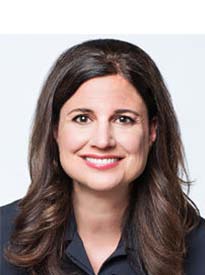
In a previous article, I explained why you need to change your note-taking habits. In this article, I explain how do it.
Advisors will be under the regulatory microscope as they are audited for compliance with the client-focused reforms (CFRs) and with their firms’ internal policies. Further, since a considerable number of your clients are seniors, it is likely that their children, as powers of attorney or executors and beneficiaries, will make suitability complaints if there are any account losses from a volatile market.
The goal for every advisor and portfolio manager is to pass all audits, and for regulators and judges to believe your version of events when clients or their PoAs/beneficiaries/executors assert KYC forms are wrong and investments are unsuitable.
I hope my last article convinced you that regardless of what stage you are at in your career, you have a lot to lose if you are the subject of a client complaint and an enforcement hearing — even a settlement with the regulator is public. Therefore, I hope you turn your minds to how you can change your habits to avoid these problems.
Here is how.
First, consider which note-taking process is easiest for you to adopt.
Before the pandemic and before my firm went paperless, the process that was easiest for me (described in more detail in my book Advisor at Risk) so that I could ensure I took notes for every client communication was handwritten notes on special yellow forms that I kept in a stack on my desk. Each time the phone rang, I reached for the stack and scribbled as much as I could to capture the conversation.
I then added the yellow sheets to the client’s file folder marked “correspondence,” which contained, in chronological order, all hard copies of all letters and emails so that we had a nice chronology of every communication with every client. Reviewing this would inform anyone challenging me of how and why each decision was made and communicated with each of our clients. Like you, my files go on for years, so my ability to remember discussions from years before is impossible.
Working from home during the pandemic, I had very little storage, so going paperless was necessary. While pre-pandemic I had tried and failed to adjust my note taking to typing, I had no choice post-pandemic. Like my handwriting, my typed notes are messy with loads of typos, but I can decipher them if necessary.
If I can change my process, you can too. And most dealers have a client relationship management (CRM) system designed specifically for client notes, so you can type them right into the system.
Second, consider the quality of your notes. Advisors and portfolio managers ask me how they can know if their notes will pass regulatory audits and dealers’ compliance audits.
If your notes fulfil my 5Cs of note taking, you should pass the scrutiny of regulators and your own compliance department requirements, as well as convince judges and regulatory arbitrators that your version, over the version of events described by your clients, is the one to be believed.
1. Contemporaneous. This is a fancy way of saying “at the same time as” the meeting or call. Please get into the habit of writing or typing while you meet or call the client. Use a headset so you can type as the client talks. With so many calls on Zoom, the client won’t even see your hands on the keyboard, and, when you use a headset, they also won’t hear the clicking of the keyboard. If you can’t type quickly enough, take handwritten notes, writing as much as you can, and scan them into the CRM system, adding any additional notes.
By the way, I do not keep it a secret from clients that I am taking notes. It is much easier to type or take handwritten notes when the client is speaking than when I am talking. So, I might ask the client for a couple of seconds when I need to type what was said. Never feel embarrassed about taking notes; clients will come to appreciate that what they say is important, and, further, it might slow the meeting down so that what is said is more thoughtful and less rushed.
2. Correct. As you know, the information you obtain from clients is relied on for the preparation of know your client (KYC) forms and investment policy statements (IPSs), which dictate the types of securities or insurance products you choose for clients. While it is old news that you need to know each client at every stage of your relationship with each of them, what is new in the CFRs is the higher “best interest” standard when it comes to suitability. The most common allegation by clients when they sue is that the investments or insurance products were unsuitable. With the higher “best interest” standard in the CFRs, you will have to prove each item on the KYC form to in turn prove that the investments were indeed suitable, assuming the investments are consistent with the KYC form/IPS. Therefore, notes of what the client told you will take the guesswork out of KYC form/IPS preparation, so investment choices consistent with the KYC/IPS will be easy to prove when the client (or their PoA or executor/beneficiaries) challenge the suitability of the investments.
3. Complete. Clients can be secretive. As an advisor, you can only invest for clients who provide you with sufficient information that permits you to use your professional judgment to advise them (see the frequently asked questions about the CFRs related to KYC). If the client is so secretive and the information to advise them has big gaps, then you must turn the client away until such time as they are prepared to share the information you need.
In presentations, many of you have heard me use the analogy of a doctor who is asked to prescribe sleeping pills to a client. When the doctor asks the client questions, the client refuses to answer. A doctor that prescribes the pills without sufficient information is putting herself and the client at risk. It could be that the client is not sleeping due to a more serious underlying medical condition and another medication will treat the underlying illness. If the doctor prescribes the sleeping pills and the underlying illness is not properly diagnosed, something serious could happen to the client and the doctor would be responsible and exposed to regulatory scrutiny and litigation.
An example for advisors is if the client tells you their time horizon is longer than 10 years, but, when you ask them about their emergency money, they refuse to share information with you. How do you support your choice of 10+ time horizon in the KYC form without the complete picture concerning the client’s potential need for this money earlier than that?
Clients may also dictate risk profile, choosing high risk to get higher returns. But unless you have the complete picture of their risk tolerance and risk capacity, you cannot know that your choice of high risk is appropriate for them. You can be sure that in a volatile or bear market, allowing the client to invest in high-risk products that might be unsuitable could pose a serious risk to your client, who may not be able to afford a loss. And the client’s loss could turn into a client complaint for which you do not have the necessary evidence to support the choice of high risk.
4. Current. Since KYC forms must be kept up to date, you need to have current information from your clients — yes, from every client. There are plenty of shortcuts you could take, but if you fulfil this obligation by contacting them regularly to ensure there are no significant changes that might impact the suitability of their portfolios, you are more likely to have meaningful conversations that serve to ensure you know your client at every stage of their relationship with you, and you can prove it.
While portfolio managers need to update each client’s KYC every 12 months and other New SRO–registered advisors every 36 months, don’t wait for the deadlines to update client information. It is best if it is updated at every client touchpoint so that the information is kept current.
Further, clients sue mostly when they are surprised. The more contact you have with clients, even for portfolio managers who are not legally obliged to get instructions for each trade, the more likely you will also update clients on portfolio performance thereby avoiding surprises when they receive their statements. Therefore, the less likely it will be that you will be the subject of a client complaint.
Many of you might say it is impossible to have this frequency of contact with all your clients. I also worry that advisors have too many clients to fulfil their CFR requirements, as I fully expect that regulators will ask during audits how many clients you service so they can assess whether you can reasonably fulfil your CFR obligations related to KYC. If the number is high, I expect the regulator may dive deeper into auditing your business practices.
5. Consistent. There are several tools for advisors to assess client KYC information, including questionnaires, that dealers may require. I suggest that once you complete the KYC form (for new clients or updates), you check the notes and any forms used to ensure the information collected is consistent. For example, if a client’s completed questionnaire or your notes indicate that the client didn’t want to lose any capital, but you chose a balanced portfolio with some risk, you will need to notice this inconsistency and send the client an email confirming conversations that explain and close the gap. Otherwise, any inconsistency may support any client complaint against you concerning suitability.
A final and important message I need to leave you with: Do not throw out contemporaneous notes, whether typed or handwritten and no matter how messy. Even if you type a message to the client confirming the conversation or put more concise notes into your dealer’s CRM software system, keep those messy notes. The messy notes are the evidence of what was actually discussed, as opposed to any notes taken after, which are your best recollection of what was discussed.
I have had advisors as clients whose practice was to pull each client’s statement for each client meeting, scribble on the statement to indicate what was discussed and then toss the statements into the garbage. Those were contemporaneous notes, and I didn’t have them when their clients launched complaints.
While you might be worried that your past practices didn’t conform to the 5Cs, if you start today all notes from now on will protect you. You cannot go back in time, but you can move forward with proper notes to protect yourselves, your dealer and your clients from wasting money and time on allegations of unsuitable investments.
